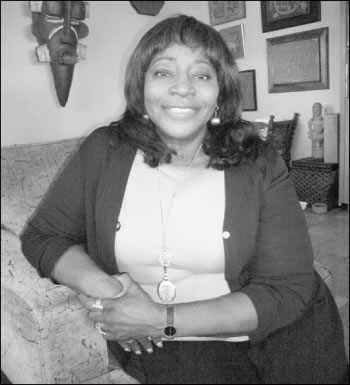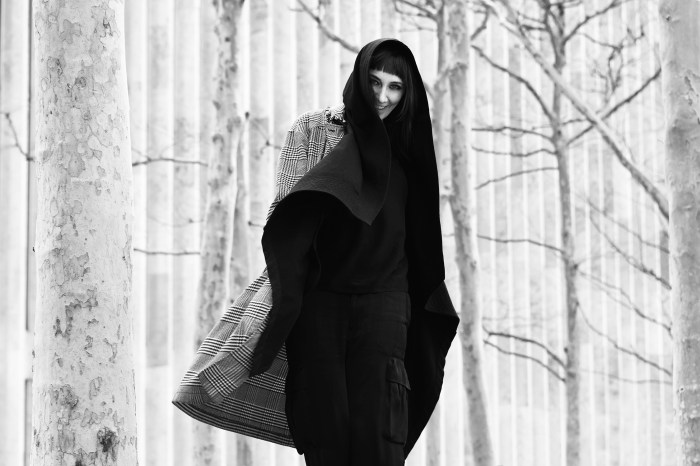By Albert Amateau
“There were about 30 of us, a quarter of us white and three-quarters of us black. When we started to wade into the water, I heard someone yell, ‘You’re on the wrong beach, nigger.’”
The wrong beach was Rainbow Beach, not in the South but on Lake Michigan in Chicago, where segregation was not in the law books but a fact of life back in 1960.
Velma Murphy Hill, a longtime Chelsea resident and former Community Board 4 member, last week recalled that Saturday August morning, 50 years ago when she was president of the NAACP Youth Council in Chicago.
“Things were changing. Students in Greensboro, North Carolina, held a sit-in at a segregated Woolworth lunch counter,” she said. “A. Philip Randolph was leading marches to get civil rights planks in the Democratic and Republican political platforms. We wanted to be a part of the changes.”
There were no white members of the NAACP Youth Council on the South Side of Chicago at the time. So Velma asked her husband-to-be, Norman Hill, who was at the University of Chicago, if he knew any white students who would join an integrated wade-in at the de facto segregated Rainbow Beach.
“We were too young to realize the depth of hatred and the violence that could follow,” she recalled. “I was 21 — at least that’s what I told police when they finally arrived after the rocks and bricks started flying.”
The barrage was launched by a group of young men who closed in from three sides on the waders.
One of the missiles hit Hill in the head.
“I had blood all over my blouse. I had to have 17 stitches,” she said. Her brother Wallace and her fiancé, Norman, got her to a changing cabana on the beach where police found her and took her to the hospital.
Hill was unlucky — a few other demonstrators sustained bruises.
“I was a big mouth,” she conceded. “I was up front and singing loud when I got hit.”
A second wade-in the following week, the last beach weekend of the season, was larger and had better police protection, but Hill was in no condition to join. The head injury she received led to temporary paralysis, left her with a limp and caused her to lose the child she was carrying in her womb.
The next summer, however, the integration of Rainbow Beach had the full support of the NAACP, the Catholic Interracial Council, the Jewish Board of Rabbis and others.
“All the progressive community came out,” Hill said. “It helped galvanize a new era in Chicago.”
On Aug. 20, Hill and her husband, Norman, will return to Chicago to dedicate a historic marker commemorating the Aug. 28, 1960, wade-in on Rainbow Beach “led by the South Side NAACP Youth Council and its President, Velma Murphy [Hill].”
The bronze plaque has a hopeful closing: “We now live in a more tolerant city where all Chicagoans can participate in public life. This is in tribute to those thirty activists and the values they championed, the audacity of youth, the power of nonviolent direct action and the human responsibility to affirm the dignity of all.”
Velma and Norman married and came to New York at the end of 1961. Velma worked with the Congress of Racial Equality (CORE) on several campaigns, including organizing paraprofessionals in the city school system.
In addition, she has been a Chelsea activist, serving on Community Board 4 in the 1990s when she was first appointed by then-Councilmember Carol Greitzer. She is currently executive vice president of the Chelsea Midtown Democratic Club.
“Norman and I are working on a book together. ‘Climbing Up the Rough Side of the Mountain’ will be an inside view of the civil rights movement from those who helped build it — coming out next year,” she said.
One of the stories might well be Velma’s encounter with Malcolm X.
“Bayard Rustin [the prominent civil rights activist who died in 1987] used to take me on his debates with Malcolm, so Malcolm must have seen me at one of them,” Velma recalled.
On a CORE picket line one day, one of Malcolm’s associates approached and told her that Malcolm wanted to speak with her.
“Malcolm said I should be at home supporting my man and not marching on a picket line,” she said. “I told him if he would take the sign I was carrying and walk on the line, I’d go home. He smiled — almost laughed — and I went back to the picket line.
“He was sexist as well as a separatist,” she said. “I’ve always been an integrationist, especially since that day 50 years ago when we stood together black and white on Rainbow Beach.”


















